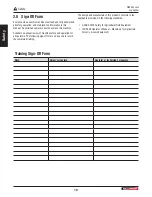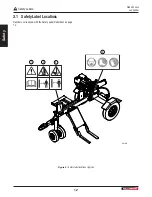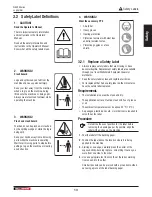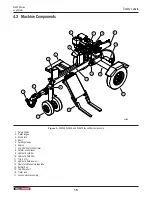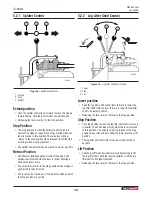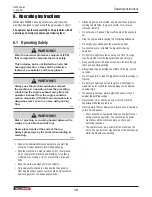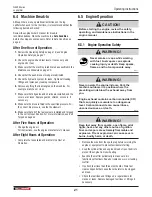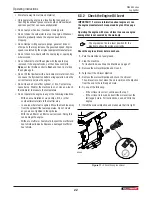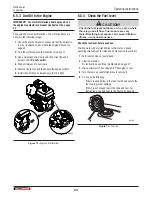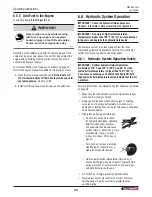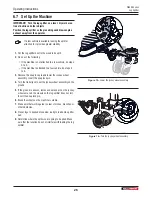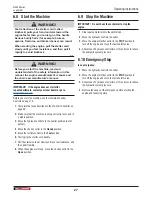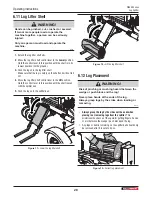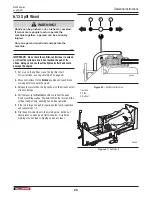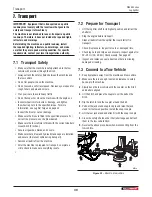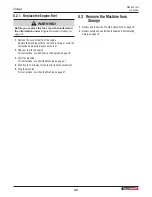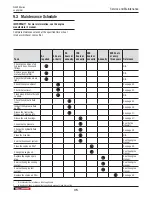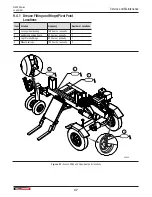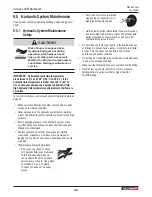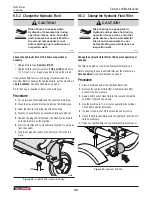
Operating Instructions
WX900 Series
Log Splitter
24
6.5.5 Add Fuel to the Engine
Fuel tank capacity:
0.82 US gal (3.1 L).
WARNING!
Never smoke or vape while working
with fuel. Fuel vapors can explode
causing injury or death. Keep sparks,
fl ames, and hot components away.
W027
Refuel in a well-ventilated area with the engine stopped. If the
engine has been running, allow it to cool first. Never refuel the
engine inside a building where gasoline fumes can come in
contact with flames or sparks.
For fuel specification, see
Fluids and Lubricants on page 33
Refer to the engine manual for additional information on fuels.
1.
Clean the area around fuel tank cap.
Fill the tank to 1/2”
(12 mm) below bottom of filler neck to provide space for
any fuel expansion.
Do not overfill.
2.
Install fuel fill cap securely and wipe up any spilled fuel.
6.6 Hydraulic System Operation
IMPORTANT! Check the hydraulic fluid quality every
50 hours. If the fluid is dirty or smells burnt, replace it.
IMPORTANT! Be aware of high fluid temperatures.
Temperatures higher than 180 °F (82 °C) can cause damage
to the seals and degrade the hydraulic fluid quality.
The hydraulic system is a closed-loop system that uses
pressurized automatic transmission fluid (ATF) to control the
splitter-control and log lifter shelf control valves.
6.6.1 Hydraulic System Operation Safety
IMPORTANT! Optimal hydraulic fluid temperatures
are between 120° F and 140° F (50° C and 60° C). If the
hydraulic fluid temperature is higher than 180° F (82° C),
it can cause seal damage and degrade the hydraulic fluid.
High hydraulic fluid temperatures often indicate that there is
a problem.
For more information, see
Hydraulic System Maintenance Safety
•
Make sure that all hydraulic system components are kept
clean and in working condition.
•
Replace a hydraulic hose that shows signs of swelling,
wear, leaks, or damage immediately. A swollen, worn,
damaged, or leaking hose can burst and cause a hazardous
and unsafe condition.
•
High-pressure hydraulic fluid leaks:
• Do not use your hand to check
for hydraulic fluid leaks. Hydraulic
fluid that leaks under pressure
can penetrate the skin and cause
serious injury or death. Use a piece
of cardboard, wood, or plastic
to check for leaks. Put on heavy
gloves.
• Put on the correct eye protection
when doing an inspection for a
high-pressure hydraulic leak.
• Get medical attention immediately if injured by a
concentrated high-pressure stream of hydraulic fluid.
Serious infection or a toxic reaction can occur after
hydraulic fluid pierces the skin.
•
Do not bend or hit high-pressure hydraulic hoses.
•
Never adjust a pressure relief valve or other pressure-
limiting device to a pressure that is greater than the
specified rating.
Summary of Contents for WX900 Series
Page 48: ...WallensteinEquipment com...

